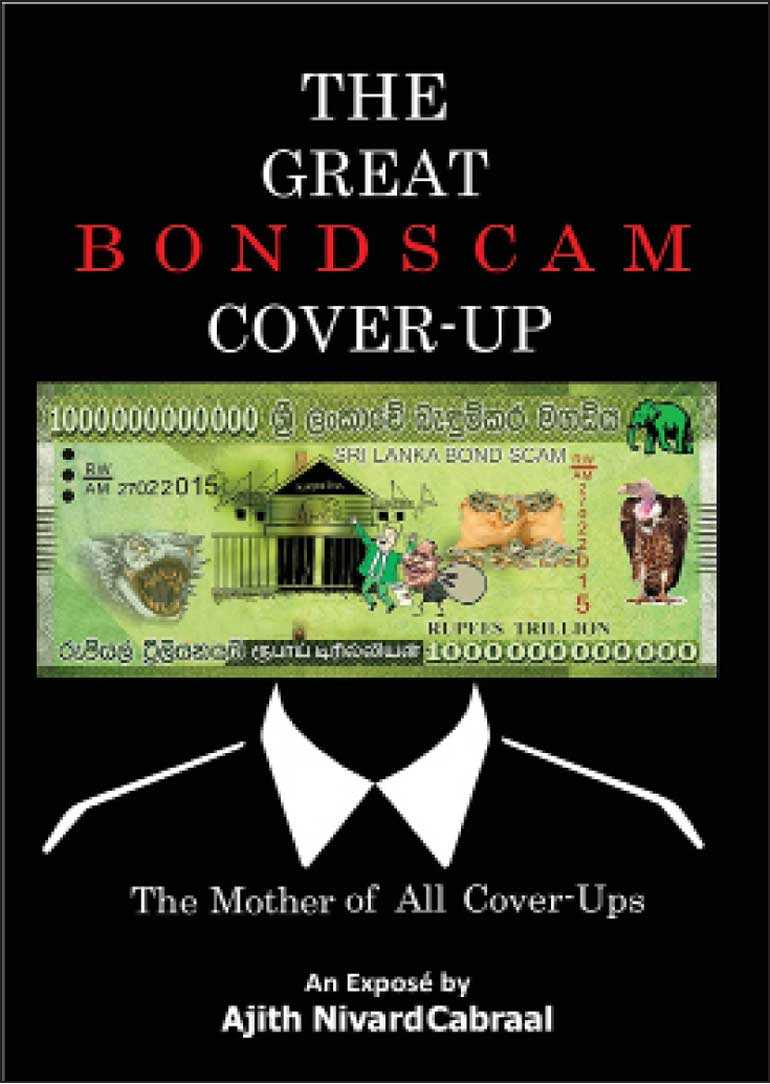Monday Dec 22, 2025
Monday Dec 22, 2025
Friday, 7 August 2020 00:00 - - {{hitsCtrl.values.hits}}

The former Governor of the Central Bank of Sri Lanka, Ajith Nivard Cabraal, in his book The Bond Scam Cover Up: The Mother of All Cover Ups, focuses on the bond scam issue, and the cover-up of that irregularity. A Sinhala translation of the work, which has attracted enormous interest over its exposes of the bond scam and its subsequent cover-up, is due to be released soon. One modus operandi of the scam’s malpractice, as revealed in the book, was by leaving footnotes in the COPE Special Parliamentary Investigation Committee report on the bond scam, which shall be referred to hereinafter in this review as the ‘PTL bond scam’. PTL was the acronym for Perpetual Treasuries Limited, which made the CBSL lose a good two billion rupees at the very least at the outset, and caused billions more in losses, running to hundreds of billions, to the Sri Lankan taxpayer. A major part of this cover-up effort was attempted in Parliament according to the author — and certain elements in the very body that was set up by Parliament to investigate the scam, the special Committee of COPE.
The footnotes in the COPE report were placed with the specific intent of blackening COPE, the book points out, and forming a fifth column within it to discredit all its good members, including Chairman Handunnetti, who was trying to get to the bottom of the scandal. The modus operandi went far beyond the mere planting of footnotes that would undermine the document from bottom up.
The so-called “footnote squad” that inserted these notes wanted to foist an alternate COPE report on Parliament, after bulldozing their way into taking over COPE proceedings, after Chairman Sunil Handunnetti had walked out due to the constant undercurrent of dissent with bad intent that was launched by the footnote squad, headed by MPs Harsha de Silva and Sujeewa Senasinghe.
PTL had obtained bonds worth 5 billion from the bond auction in early 2015 when the scam was perpetrated, but Senasinghe wrote a book in Sinhala that claimed PTL had obtained bonds worth 2 billion.
A court case was also filed, ostensibly targeting the scam, the book states, but precisely with the intent of getting it dismissed. It became somewhat obvious with the case that the Petitioners, well-known UNP sympathisers, went to Court to give the outside world the appearance that the scam has been ‘considered’, and dismissed forthwith by Court.
The author suggests that this petition had been cleverly designed and constructed to mislead the public through the tacit suggestion that the Supreme Court petition was to decide on the “guilt” or otherwise of Governor Mahendran.
The PTL’s profit-making was staggering. Treasury Bills and Bonds outstanding as at end December 2014 amounted to nearly Rs. 4,000 billion. Accordingly, a single percentage point increase in the overall interest rates paid by the Government when issuing Treasury Bills and Bonds could cause an increase in the Government’s debt-servicing cost by a staggering Rs. 40 billion, which incidentally, is even more than the reported $ 200 million expected selling price of the Mattala Airport, which at the exchange rate (of around 130 per USD) prevailing in 2014) was about Rs. 26 billion, states the author.
Governor Mahendran also personally and physically participated in the execution of the Bond transaction at the Treasury bond auction room itself, a practice none of his predecessors had ever indulged in. This blatantly corrupt transaction with “inside” knowledge, which was carried out with impunity, sent shockwaves across the country’s debt market, and caused havoc within the entire interest rate structure of the country within a few minutes.
However, the Presidential Commission of Inquiry appointed to investigate the scam deftly side-stepped the quantification of all of these losses caused by the Bond Scam, the author writes.